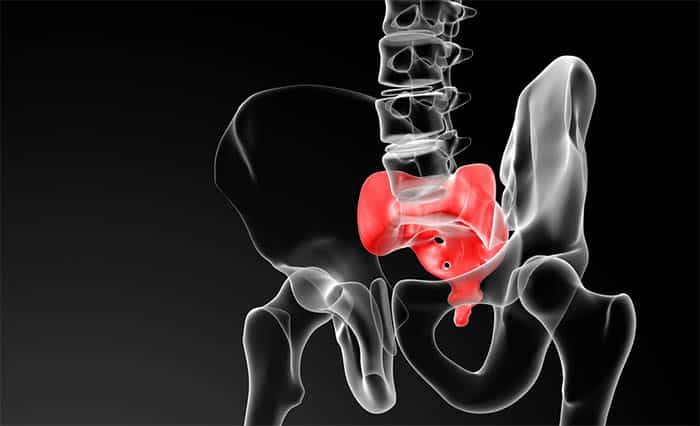
Pain in the sacrum
Sacrum pain and sacrum pain can be painful. Pain in the sacrum can be due to muscle dysfunction / myalgia, inflammation, sciatica / nerve irritation in the back or seat, as well as joint locks in the pelvis, lower back or hip.
Some of the most common causes are iliosacral joint locking, overload, trauma, poor sitting position, wear and tear, muscular failure loads (especially the gluteal muscles) and mechanical dysfunction in nearby joints (eg pelvis or lower back). Myalgias in the seat can also refer pain to the sacrum by so-called active myalgias (overactive muscles). Sacral pain is a disorder that affects a larger proportion of the population at some point in their lives - both old and young. But especially women, often after pregnancy, are more prone to pain in the sacrum than others - which shows the pelvic direct impact on this problem. More rare causes are ischiofemoral impingement syndrome, bone cancer and major infections.
Did you know: - Cold treatment can give pain relief to sore joints and muscles? Blue. Biofreeze is a popular product!

Where is the sacrum?
Sacrum (Norwegian) is called sacrum in English. You will find the sacrum below the lower joint in the lumbar spine (L5) - the transition to the sacrum is called the lumbosacral transition, ie where L5 meets S1 (sacrum 1). See anatomical illustration further down in the article.
Also read:
- Complete overview of muscle knots and their reference pain pattern
- Pain in the muscles? This is why!
Seat anatomy (from front, left, and back, right)
Front part of the seat muscles:
In the picture we take special note iliopsoas (hip flexor) which can cause myalgia pain to the front of the seat, to the groin. On the outside of the seat in the attachment to the hip ball we also see TFL (tensor fasciae latae) which can pain on the outside of the seat against the hip and outside of the upper the thigh.
Rear part of the seat muscles:
This is where we find most muscular causes of seat pain. Especially the trio gluteus maximus, gluteus medius og gluteus minimus is often to blame for pain in the sacrum - the gluteus medius and minimus can actually both contribute to so-called false sciatica / sciatica with referenced pain down the leg and leg. piriformis is also a muscle often involved in false sciatica - and has had the dubious honor of having a false sciatica syndrome named after him, namely piriformis syndrome. Piriformis is the muscle that is closest to the sciatic nerve, and thus muscle dysfunction here can give sciatic symptoms.
As we note from the pictures above, the body's anatomy is both complex and fantastic. This, in turn, means that we must focus holistically on why the pain occurred, only then can effective treatment be provided. It is also important to remember that it never does 'just muscular', there will always be a joint component, an error in movement pattern and behavior that also forms part of the problem. They only work together as a unit.
Anatomy of the pelvis
What we call the pelvis, also known as pelvis (ref: large medical lexicon), consists of three joints; the pubic symphysis, as well as two iliosacral joints (often called pelvic joints). These are supported by very strong ligaments, which give the pelvis a high load capacity. In the 2004 SPD (symphysis pubic dysfunction) report, obstetrician Malcolm Griffiths writes that neither of these three joints can move independently of the other two - in other words, movement in one of the joints will always lead to a counter-movement from the other two joints.
If there is uneven movement in these three joints we can get a combined joint and muscular torment. This can become so problematic that it will require musculoskeletal treatment to be corrected, e.g. physiotherapy, chiropractic or manual therapy.
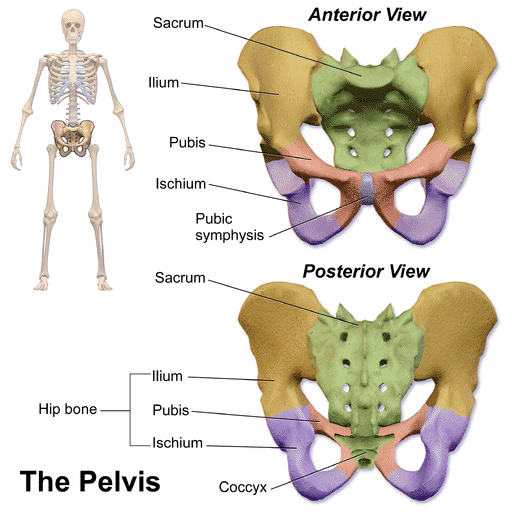
Pelvic anatomy - Photo Wikimedia
What is pain?
Pain is the body's way of saying that you have injured yourself or are about to hurt you. This is an indication that you are doing something wrong. Not listening to the body's pain signals is really asking for trouble, as this is its only way to communicate that something is wrong. This applies to pain and aches all over the body, not just back pain as so many people think. If you do not take the pain signals seriously, it can lead to long-term problems, and you risk the pain becoming chronic. Naturally, there is a difference between tenderness and pain - most of us can tell the difference between the two.
Treatment and specific training guidance by a musculoskeletal expert (physical therapist, chiropractor or manual therapist) is often advised to overcome the problem for a long time. The treatment will target and treat dysfunctions in the muscles and joints, which in turn will reduce the incidence of pain. When the pain is attenuated, it is necessary to weed out the cause of the problem - maybe you have a slightly bad posture that leads to some muscles and joints being overloaded? Unfavorable working position? Or maybe you do not perform the exercises in an ergonomically good way?
Some common causes / diagnoses of sacrum pain are:
Osteoarthritis (the pain depends on which joints are affected, but sacrum pain may be due osteoarthritis of the hip)
pelvic locker (pelvic locking and associated myalgia can cause pelvic and tail pain, and further to the hip)
Soft tissue damage
Gluteal myalgia (pain in the seat, against the tailbone and hip, against lower back or hip)
Hamstrings myalgia / muscle damage (causes pain on the back of the thigh and against the tailbone, depending on the area that is damaged)
Iliosacral joints (may cause lower back pain and pelvic pain)
Iliopsoas bursitis / mucus inflammation (often results in reddish swelling in the area, night pain and extreme pressure)
Iliopsoas / hip flexors myalgia (Muscular dysfunction in the iliopsoas will often cause pain in the upper thigh, the front, the groin and occasionally the seat)
Ischiofemoral impingement syndrome (most common among women, preferably athletes - involves a squeezing of the quadratus femoris)
Sciatica / sciatica (Depending on how the nerve is affected, it may cause referenced pain against the seat, leg, thigh, knee, leg and foot)
Joint locker / dysfunction in the pelvis, tailbone, sacrum, hip or lower back
Lumbar prolapse (nerve irritation / disc injury in the L3, L4 or L5 nerve root can cause referred pain in the seat)
Piriformis syndrome (may give rise to false sciatica)
Rare causes of pain in the sacrum:
Inflammation
Sacral fracture
hemorrhoids
Infection (often with high CRP and fever)
bone cancer or any other cancer
Be careful not to get sore in the sacrum for a long time, rather consult a clinician and diagnose the cause of the pain - this way you will make the necessary changes as early as possible before it has a chance to develop further.
Common reported symptoms and pain presentations in sacrum pain:
Inflammation of the sacrum
Deafness in sacrum
Burning in sacrum
Deep pain in sacrum
Electric shock in sacrum
Hogging in sacrum
Knot i sacrum
Cramps in sacrum
Joint pain in sacrum
Locked in storage room
Ant in the sacrum
Murmur in sacrum
Muscular pain in sacrum
The name i sacrum
Tendonitis in the sacrum
Shake in sacrum
Lopsided in sacrum
Worn in sacred space
Stitching in sacrum
Stool in sacrum
Wounds in sacrum
Effect in sacrum
Sore in sacrum
Clinical signs of sacrum and sacrum pain
Swelling can occur around a trauma or through an infection.
- Reduced movement in the lower back and pelvis on palpation.
- Pain during prolonged sitting in a chair, for example during a seminar or flight.
- Pressure tenderness over the pelvic joint and sacrum may indicate defects in muscular or joint function.
How to prevent pain in sacred space
- Live healthy and exercise regularly
- Seek well-being and avoid stress in everyday life - try to have a good sleep rhythm
- Training aimed at stability of the lower back, hip and pelvis
- chiropractor og manual therapists can both help you with joint and muscle ailments.
Imaging diagnostic examination of the sacrum
Sometimes it may be necessary imaging (X, MR, CT or diagnostic ultrasound) to determine the exact cause of the problem. Normally, you will be able to do without taking pictures of the sacrum - but this is relevant if there is a suspicion of muscle damage, rupture of the sacrum, hip or lumbar prolapse. In certain cases, X-rays are also taken with the intention of checking for changes in wear and any fractures. Below you see various pictures of what the sacrum / pelvis looks like in the different forms of examination.
X-ray of the sacrum and pelvis (from front, AP)
X-Ray Description: In the x-ray above you can see a female pelvis / pelvis (AP view, front view), consisting of sacrum, ilium, iliosacral joint, tailbone, symphysis etc.
MR picture / examination of the sacrum and pelvis
MR description: In the MR image / examination above you see a female pelvis in a so-called coronal cross-section. In MRI examination, versus X-ray, soft tissue structures are also visualized in a good way.
CT image of the seat
Here we see a CT examination of the seat, in a so-called cross-section. The picture shows the gluteus medius and maximus, which in pronounced myalgia can cause pain in the sacrum.
Diagnostic ultrasound of the seat (above the right tuberosity majus)
Here we see a diagnostic ultrasound examination of the seat. The examination shows the gluteus medius and gluteus maximus.
Time classification of pain in the sacrum. Is your pain rated as acute, subacute or chronic?
Pain in the sacrum can be divided into acute, subacute og chronic pain. Acute sacrum pain means that the person has had pain in the sacrum for less than three weeks, subacute is the period from three weeks to three months and the pain that has a duration of more than three months is classified as chronic.
Clinically proven effect on pain relief in sacrum
A study published in 2013 (Barton et al) showed that those with weak gluteal muscles had a higher risk of developing PFPS (patellofemoral pain syndrome - in the knee). Chiropractic traction bench treatment can provide symptom relief and functional improvement in spinal stenosis (Cox et al, 2012) which can be a cause of seat / sacrum pain. A study published in 2015 (Pavkovich et al) showed that dry needling combined with stretching and exercises had symptom-relieving and function-improving effects in patients with chronic thigh and hip pain. A systematic review study (meta-analysis) published in 2010 (Kalichman) determined that dry needling (see video example below) can be effective in treating musculoskeletal pain problems.
Conservative treatment of pain in the sacrum
home Practice is often printed and used to address improper use of musculature, with the intention of providing a long-term, long-lasting effect. Ultrasound can be used both diagnostically and as ultrasound therapy, the latter works by providing a deep-warming effect aimed at musculoskeletal problems. Joint Mobilization or corrective chiropractic joint treatment increases the movement of the joints, which in turn allows the muscles that attach to and near the joints to move more freely. Chiropractic joint therapy is often combined with muscle work in the treatment of sacrum syndrome and seat tension.
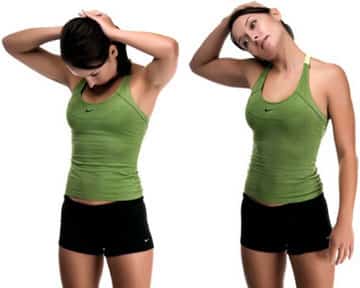
Massage It is used to increase blood circulation in the area and thus reduce muscular tension, which in turn can cause less pain. heat treatment used to give a deep-warming effect on the area in question, which in turn can give a pain-reducing effect - but it is generally said that heat treatment should not be applied to acute injuries, as is ice treatment, e.g. Biofreeze, to be preferred. The latter is used in acute injuries and pain to help alleviate the pain in the area. laser treatment (also known as anti-inflammatory laser) can be used at different frequencies and thus achieve different treatment effects. It is often used to stimulate regeneration and soft tissue healing, plus it can also be used anti-inflammatory.
List of treatments (both much alternative and more conservative):
- acupressure
- Acupuncture
- aromatherapy
- behavioral therapy
- Atlas Correction
- Ayurvedic medicine
- Bioelectromagnetic therapy
- Biofreeze cold treatment
- blockade Treatment
- Soft tissue work
- Bowen Treatment
- Coxtherapy
- Electrotherapy
- Ergonomics
- Dietology
- Reflexology
- Physiotherapy
- gonstead
- Healing
- home Practice
- Homeopathy
- Hydrotherapy
- hypnotherapy
- Infrared light therapy
- insoles
- Intramuscular needle therapy
- Ice therapy
- remedy
- kinesiology
- Kinesiotape
- chiropractic
- Cognitive processing
- crystal Therapy
- contrast Treatment
- Cupping
- Cold Treatment (can provide pain relief against sore joints and muscles? Blue. Biofreeze is a popular product)
- Laser
- Joint Correction
- Joint Mobilization
- Medical treatment
- Lymphatic drainage
- Light Therapy
- magnet Treatment
- manual Therapy
- Meditation
- Muscle Relaxing Medications
- muscle Knute treatment
- Myofascial technique
- Naprapathy
- Naturopathy
- Neurological rehabilitation training
- qigong
- Osteopathy
- breathing
- reflexology
- Shockwave Therapy
- Foam roll / foam roll
- Pain medication
- Spinology
- Sports support
- Stretch bench
- Power Management
- sole Customization
- Thought Field Therapy
- TENS
- Thai Massage
- Traction
- Exercise
- Trigger point therapy
- Shockwave Therapy
- Dry needle
- stretching
- Vacuum Treatment
- heat treatment
- Hot water therapy
- Yoga
- Exercises
Chiropractic treatment of sacrum
The main goal of all chiropractic care is to reduce pain, promote overall health and improve quality of life by restoring normal functioning of the musculoskeletal system and nervous system. In case of sacrum pain, the chiropractor will treat the seat locally to reduce pain, reduce irritation and increase blood flow, as well as restore normal movement in the lower back, pelvis and hip. When choosing a treatment strategy for the individual patient, the chiropractor places emphasis on seeing the patient in a holistic context. If there is a suspicion that the seat pain is due to another disease, you will be referred for further examination.
The chiropractor treatment consists of a number of treatment methods where the chiropractor mainly uses his hands to restore normal function of the joints, muscles, connective tissue and nervous system:
- Specific joint treatment
- Stretches
- Muscular techniques
- Neurological techniques
- Stabilizing exercise
- Exercises, advice and guidance
What does one do chiropractor?
Muscle, joint and nerve pain: These are things that a chiropractor can help prevent and treat. Chiropractic treatment is mainly about restoring movement and joint function that can be impaired by mechanical pain. This is done by so-called joint correction or manipulation techniques, as well as joint mobilization, stretching techniques, and muscular work (such as trigger point therapy and deep soft tissue work) on the involved muscles. With increased function and less pain, it may be easier for individuals to engage in physical activity, which in turn will have a positive effect on both energy, quality of life and health.
Exercises and training in case of pain in the sacrum
An expert in muscle and skeletal disorders can, based on your diagnosis, inform you about the ergonomic considerations you must take to prevent further damage, thus ensuring the fastest possible healing time. After the acute part of the pain is over, in most cases you will also be assigned home exercises that also help to reduce the chance of relapse. In chronic conditions it is necessary to go through the motor movements you do in everyday life, in order to weed out the cause of your pain occurring time and time again.
Relevant exercises and advice: - 8 good tips for sciatica and seat pain
In case of pain in the sacrum, tight muscles are often included in the diagnosis, so stretching the hamstrings, gluteal muscles and lumbar muscles can have a positive effect. It can also be beneficial to train stability in the hip, pelvis and lower back. Feel free to use these exercises for gentle (but very effective) training of deep lower back muscles.
Women's advice against pain in the sacrum
We choose to bring some advice against the pain in the sacrum. We have also tried to understand the meaning behind them and thus put a little explanation in brackets.
- Drink ginger tea (Ginger reduces muscle pain)
- Rest in the sun (The sun provides the basis for vitamin D. Vitamin D deficiency has been linked to increased muscle pain)
- red bell pepper powder (Red bell pepper has among the very highest content of vitamin C - needed for soft tissue repair)
- Eat blueberries (Blueberries have a pain-relieving and anti-inflammatory effect)
- Eat onions and garlic (This one we're not sure about, but maybe again it's the focus on anti-inflammatory action?)
Also read: - Is it tendonitis or tendon INJURY?
Also read: - Ischiofemoral impingement syndrome: A rare cause of chronic seat pain
Training:
- Chin-up / pull-up exercise bar can be an excellent exercise tool to have at home. It can be attached and detached from the door frame without the use of a drill or tool.
- Cross-trainer / ellipse machine: Excellent fitness training. Good for promoting movement in the body and exercising overall.
- Rubber exercise knit is an excellent tool for you who need to strengthen the shoulder, arm, core and more. Gentle but effective training.
- Kettlebells is a very effective form of training that produces fast and good results.
- Rowing Machines is one of the best forms of training you can use to get good overall strength.
- Spinning ergometer bike: Good to have at home, so you can increase the amount of exercise throughout the year and get better fitness.
"I hated every minute of training, but I said, 'Don't quit. Suffer now and live the rest of your life as a champion. » - Muhammad Ali
Advertising:

- Click here to read more on adlibris or amazon.
References:
Barton et al (2013). Gluteal muscle activity and patellofemoral pain syndrome: a systematic review. Br J Sports Med. 2013 Mar; 47 (4): 207-14. doi: 10.1136 / bjsports-2012-090953. Epub 2012 Sep 3.
Cox et al (2012). Chiropractic management of a patient with lumbar spine pain due to synovial cyst: a case report. J Chiropr Med. 2012 Mar; 11 (1): 7–15.
Pavkovich et al (2015). EFFECTIVENESS OF DRY NEEDLING, STRETCHING, AND STRENGTHENING TO REDUCE PAIN AND IMPROVE FUNCTION IN SUBJECTS WITH CHRONIC LATERAL HIP AND THIGH PAIN: A RETROSPECTIVE CASE SERIES. Int J Sports Phys Ther. 2015 Aug; 10 (4): 540–551.
Kalichman et al (2010). Dry Needling in the Management of Musculoskeletal Pain. J Am Board Fam MedSeptember-October 2010. (Journal of the American Board of Family Medicine)
Images: Creative Commons 2.0, Wikimedia, WikiFoundy, Ultrasoundpaedia, LiveStrong
Also read: - Are you struggling with 'restless bones'in the evening and at night?
Frequently Asked Questions Regarding Pain in Sacred Rooms:
Q: Can foam roll help me with sacrum?
Answer: Yes, a foam roller / foam roller can help you in part, but if you have a problem with the sacrum, we recommend that you contact qualified health professionals in the field of musculoskeletal subjects and get a qualified treatment plan with associated specific exercises. Foam roller is often used against the outside of the thigh, against the iliotibial band and tensor fascia latae - which can take some pressure off the seat and hip.
Q: Why do you experience pain in sacrum?
Answer: Pain is the body's way of saying that something is wrong. Thus, pain signals must be interpreted as meaning that there is a form of dysfunction in the area involved, which should be investigated and further remedied with proper treatment and exercise. Causes of pain in the seat can be due to sudden misload or gradual misload over time, which can lead to increased muscular tension, joint stiffness, nerve irritation and, if things have gone far enough, discogenic rash (nerve irritation / nerve pain due to disc disease in the lower back, so-called lumbar prolapse with affection against L3, L4 or L5 nerve root).
Q: Pregnant woman asks - what should be done with sore sacrum full of muscle knots?
Reply: muscle knots has most likely occurred due to muscle imbalance or incorrect load. Associated muscle tension can also occur around joint locks in nearby lumbar, hip and pelvic joints. Initially, you should get qualified treatment, and then get specific exercises and stretching so that it does not become a recurring problem later in life. Some people think that a so-called pregnancy pillow can provide good relief for sore back and pelvic pain. If so, we recommend Leachco Snoogle, which is the best seller on Amazon and has over 2600 (!) positive feedback.
 Follow Vondt.net on YOUTUBE
Follow Vondt.net on YOUTUBE
(Follow and comment if you want us to make a video with specific exercises or elaborations for exactly YOUR issues)
 - LIKE Vondt.net on FACEBOOK
- LIKE Vondt.net on FACEBOOK
(We are a free information service and ask you nicely if you can give us a LIKE so we can help as many people as possible. We will try to answer all messages and questions within 24-48 hours. We can also help you with exercises, interpretation of MRI responses and the like ++ completely FREE!
Also read: - Rosa Himalayan salt's incredible health benefits
Also read: - New Alzheimer's treatment restores full memory function!
Also read: - Pain in the chest? Do something about it before it gets chronic!
Also read: - Muscle aches? This is why…

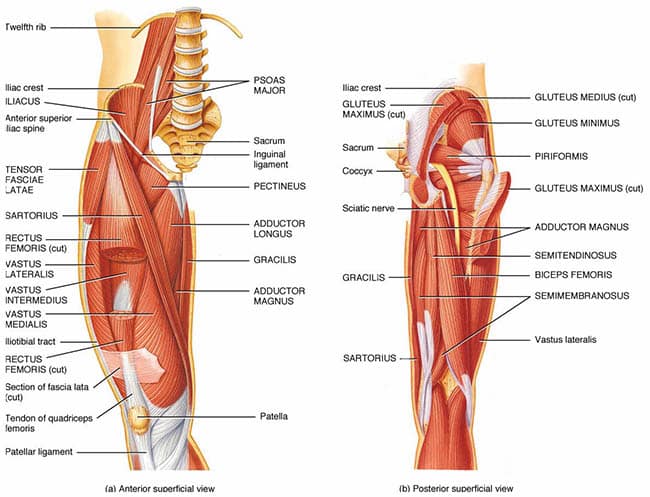
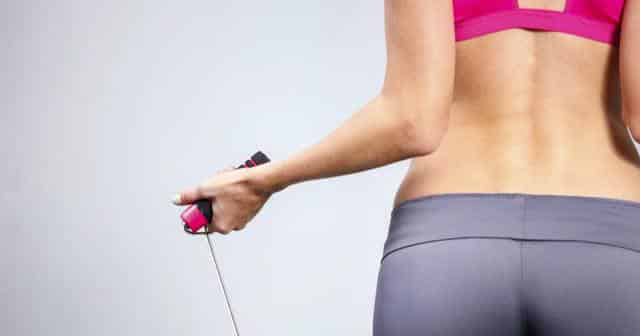

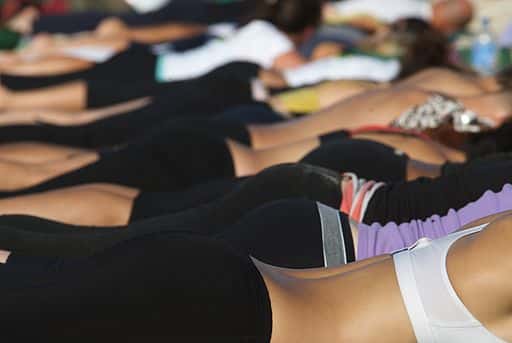
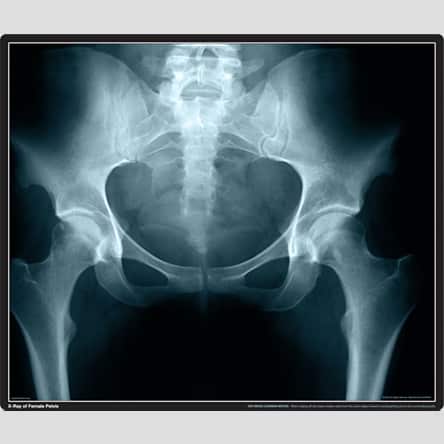
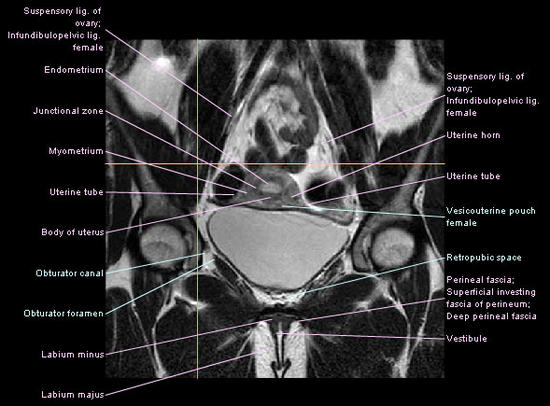
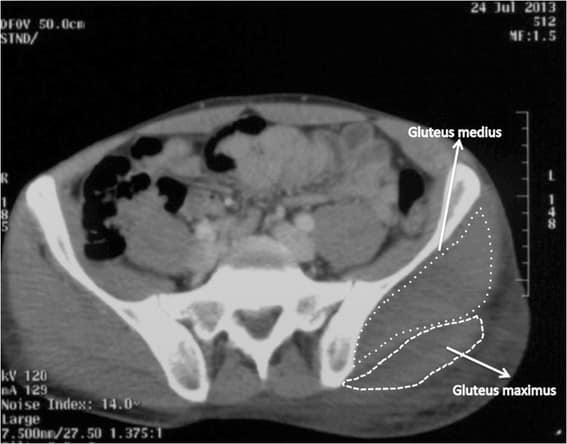
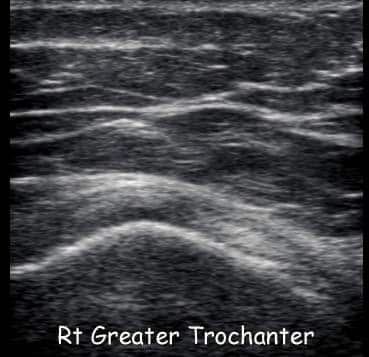












Leave a reply
Want to join the discussion?Feel free to Contribute!